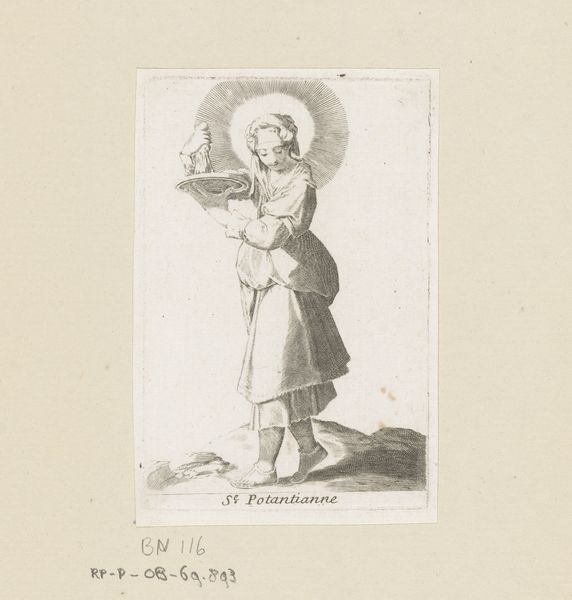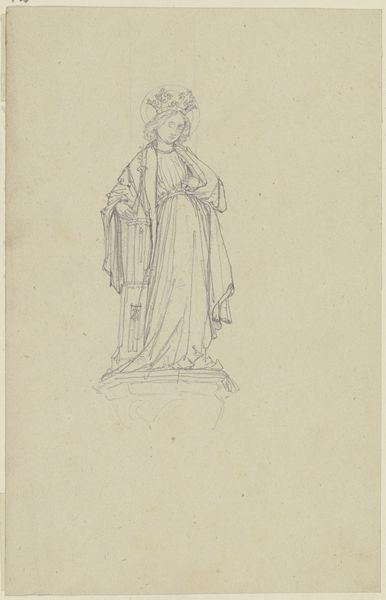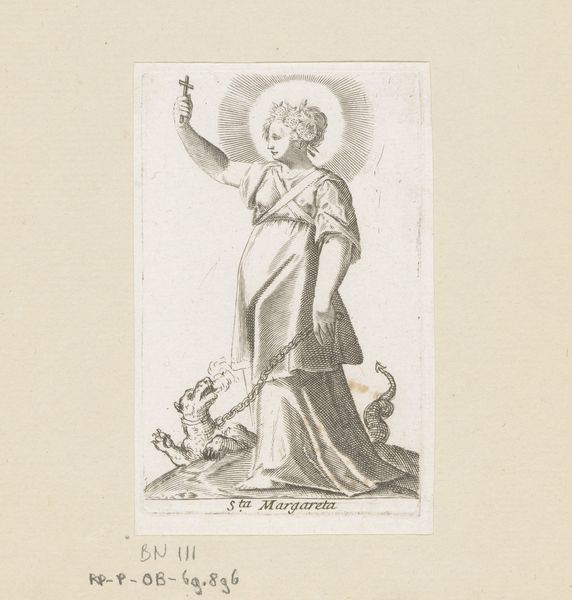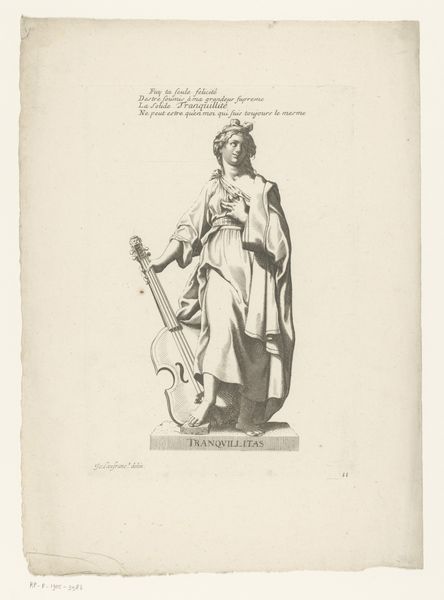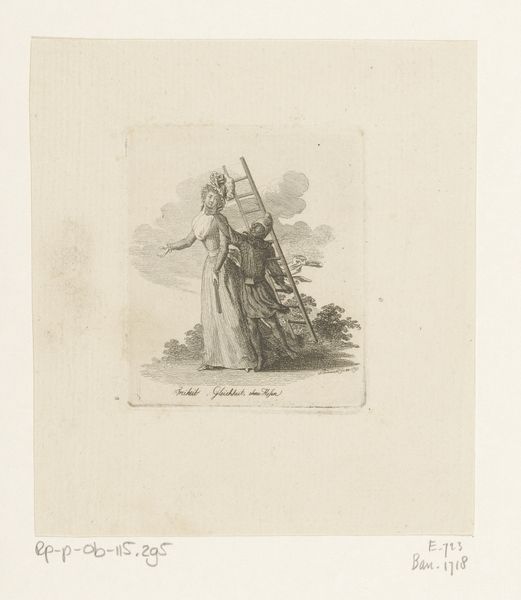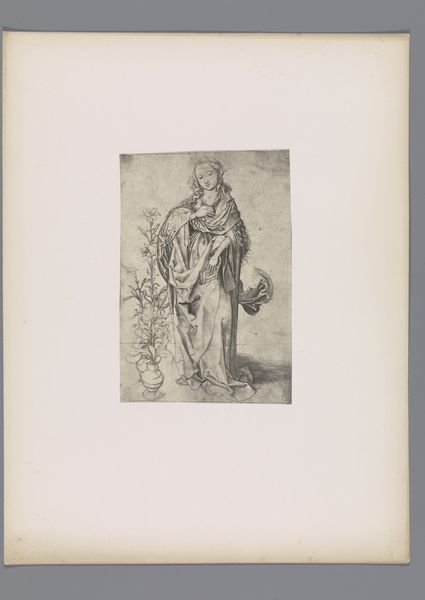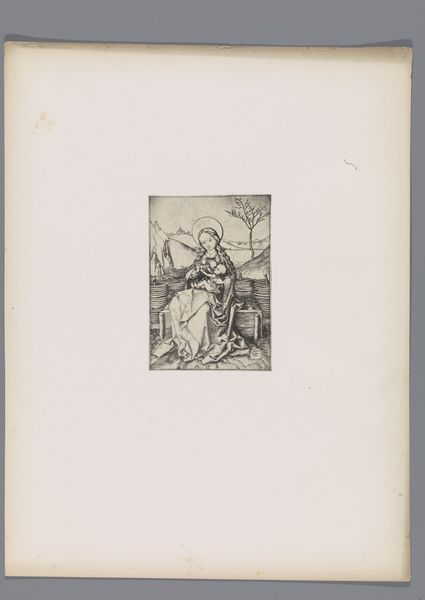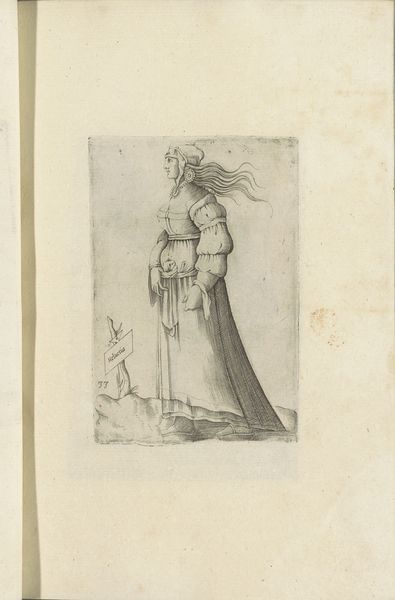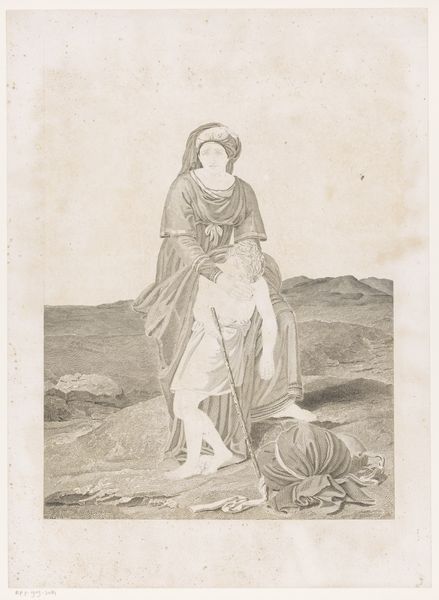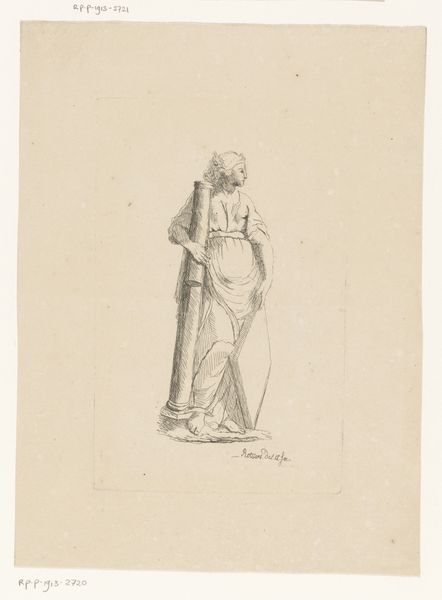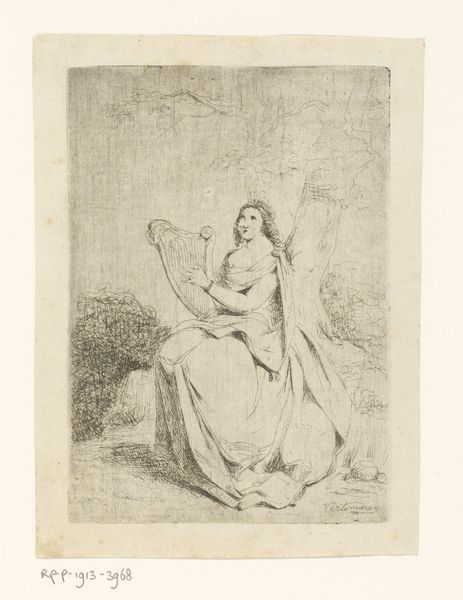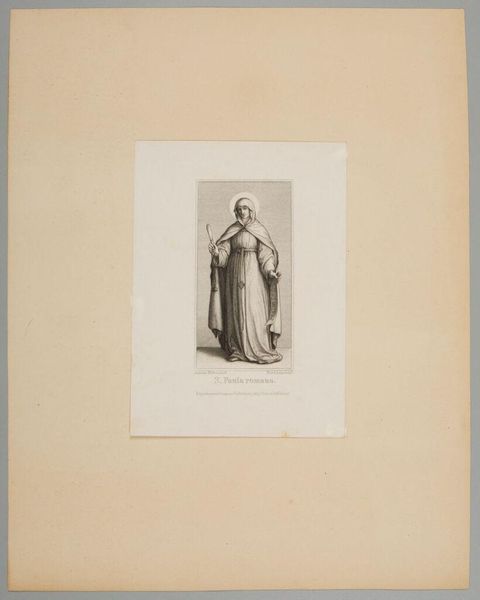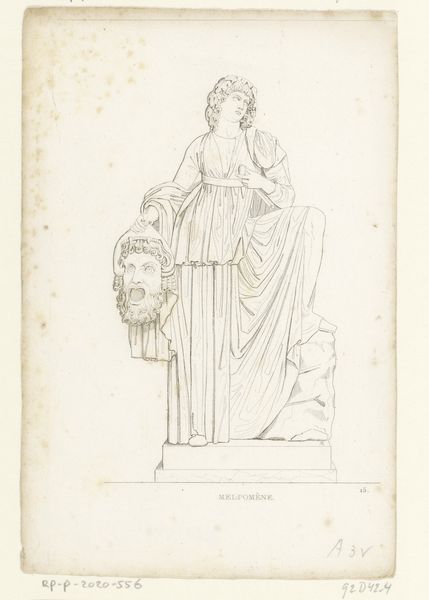
#
photo of handprinted image
#
aged paper
#
light pencil work
#
pastel soft colours
#
pale colours
#
ink paper printed
#
light coloured
#
white palette
#
personal sketchbook
#
soft colour palette
Dimensions: height 93 mm, width 62 mm
Copyright: Rijks Museum: Open Domain
Curator: Standing before us is Claude Mellan's "H. Suzanna," an engraving dating back to sometime between 1608 and 1688. It’s currently held here at the Rijksmuseum. Editor: The figure appears rather delicate. The linework is incredibly fine. Almost fragile. I am instantly struck by the overall muted, almost ethereal quality, created with light pencil work. Curator: Mellan was known for his extraordinary skill with the burin. This is such a masterful use of line to suggest form and volume. It exemplifies the engraver’s technique during that period. One can see the emphasis on clarity and precise rendering. He was quite influential. Editor: Absolutely, yet something about the composition gives me pause. Suzanna is posed in a very particular way. The context seems steeped in notions of virtue and purity. Curator: Indeed. The engraving alludes to the biblical story of Susanna and the Elders, which was often evoked during that time in social debates about female virtue and moral integrity, and frequently adapted into artistic depictions of the voyeuristic encounter. We have to acknowledge it reinforces, and simultaneously engages, ideas around idealised feminine morality. Editor: It's quite a charged dynamic when you frame it that way. The male gaze is inherent in so many of these historical portrayals. And there she is, literally placed on a pedestal with rings below that almost feels like spoils. Do you think the society for whom the engraving was produced critically assessed the biblical narrative and the issues with a visual representation like this, or whether it was mainly accepted as an affirmation of moral values? Curator: Such engravings, circulated widely, played a complex role in the construction and enforcement of social norms. And its context certainly suggests an agenda far beyond purely religious sentiment. One has to think of the period. A male dominated, stratified, political landscape where art served various aims. Editor: Understanding it as part of a system makes the politics of representation feel less distanced. I appreciate gaining a historical perspective on such narratives, especially where it touches on gender, and cultural expectations. Curator: Likewise, reflecting on its position and intent can offer critical awareness of contemporary depictions and their possible implications, also allowing appreciation for technique. Editor: Indeed, it leaves you with plenty to ponder, especially if you can see it reflected against contemporary conversations.
Comments
No comments
Be the first to comment and join the conversation on the ultimate creative platform.
